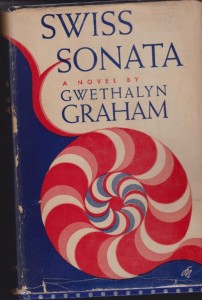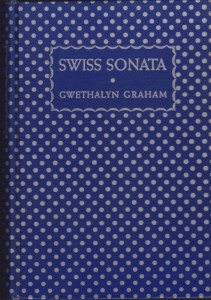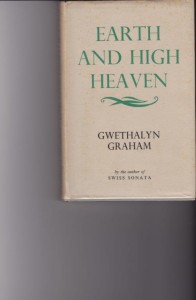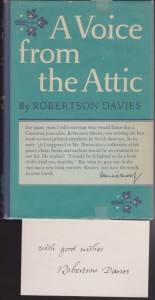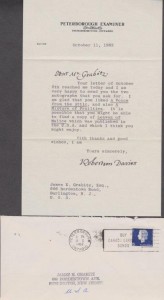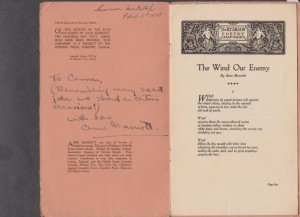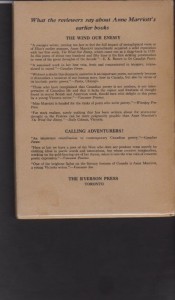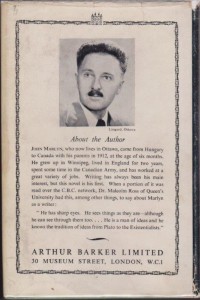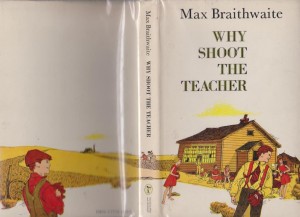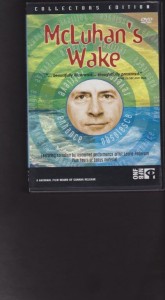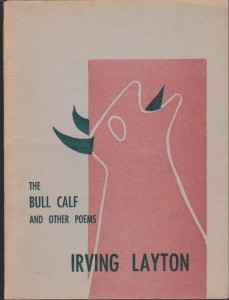

(rare, clean, intact associative book; Contact Press, 1956; arguably title poem is his most famous, signature; book is dedicated to his daughter Naomi, for whom he wrote the tender poem “For Naomi”)
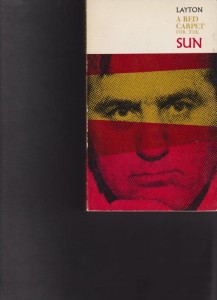

(1959 McClelland & Stewart pb, signed by Layton, designed by Frank Newfeld; his G-G winner)

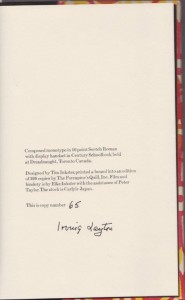
(scarce slipcased signed ltd. ed–199 copies; The Uncollected Poems of Irving Layton, Mosaic Press/Valley Editions, 1976; designed by Tim Inkster, Porcupine Quill printer)

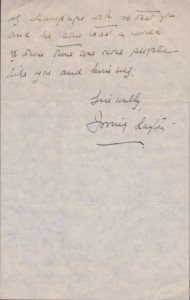
(very rare signed handwritten letter by author)

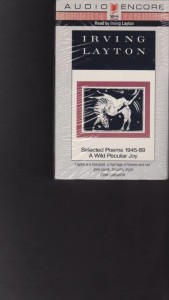
(Along with Leonard Cohen, Layton is/was our most audially-broadcast poet; left; a must-have for fans of Cohen and Layton in the Smithsonian Folkways Archival CD which also features A.J.M. Smith, Louis Dudek, F.R. Scott, and Cohen. Originally, it was published as a vinyl record. Right: rare McLelland & Stewart, 1990: Audio encore cassette; cover illustration: Bernice Eisenstein, original cover design: T.M. Craan)


(left: rare 1973 Caedmon LP–the only other Canadian poet who was featured by Caedmon; cover: Harold Town, album design: David Shaw, photo: Erik Christensen)

(awesomely rare LP, 1962, Posterity; illustration: Chris Wells & J. Saint-Cyr; recorded live at Ottawa’s Le Hibou coffeehouse)
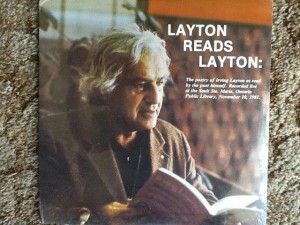

(likewise awesomely rare, mint 1981 Astro Custom LP; cover design: Karen Pietkiewicz, cover photo: Grey Goddard, photographed at sault Ste. Marie, Ontario Public Library; recording was made there)
(Peter) Irving Layton (1912-2006) was easily our country’s most brash and audacious poet, known for challenging the prudery of Canadian sensibilitities in the ’50s and ’60s. Fearless and blunt, Layton’s honest work often challenges readers about their own complacencies.
Layton was born in Roumania and came to Montreal at an early age, and brought up in a cockroach-infested tenement on Montreal’s famed St. Urbain’s Street. He studied economics at McGill and achieved an M.A. Later, he taught English at a boys’ school and founded Contact Press with Louis Dudek and Raymond Souster. He was married a few times, once to Betty Sutherland, who was actor Donald’s half-sister.
He was blacklisted in the US because of his involvement with the David Lewis and the CCF. Layton wrote erotic poems and was a great social critic, appearing on the CBC tv program Fighting Words. Popular also in South Korea and Italy, he was twice nominated for the Nobel Prize for Literature.
He was a close friend and early mentor of Leonard Cohen, and was also admired by Bob Dylan and Allan Ginsberg. Layton later developed Alzheimer’s and died at 93. Cohen gave the eulogy and joked that “I taught him to dress, he taught me how to live forever.”


